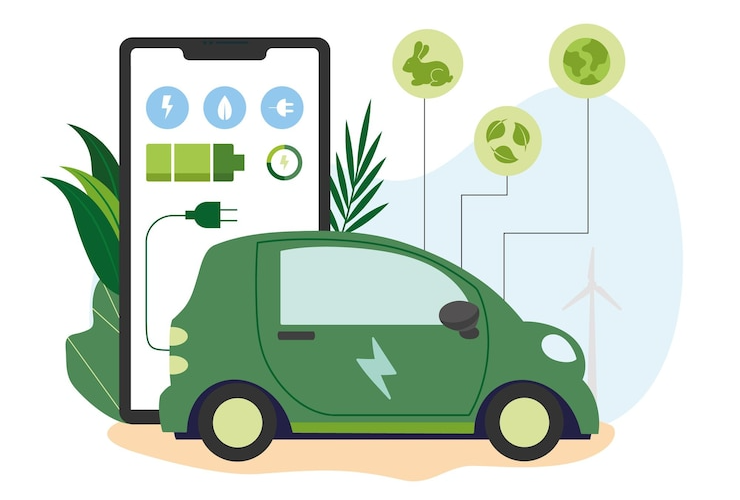
In the era of sustainable living, electric vehicles (EVs) are a green choice and an opportunity for income. With the surge in EV ownership, innovative ways to make money with these eco-friendly vehicles are emerging, tapping into the gig economy and the sharing culture.
From advertising on the move to participating in ride-sharing platforms and even monetising home charging stations, EV owners have several options to explore.
This guide delves into the lucrative possibilities that your electric car can offer, turning it from a mere mode of transport into a potential income stream.
Electric Vehicles and the Australian Motorist
The transition to electric vehicles in Australia is accelerating at an impressive pace. In 2023, EV sales hit a record 87,217, almost triple the previous year’s figures, with their market share increasing to 7.2% from 3% as total car sales across the board hit a record 1.2 million.
In Australia, Tesla leads the sales. The Tesla Model Y emerged as the top-selling electric vehicle, followed by the Tesla Model 3 and the BYD Atto 3. Other popular models, including the MG 4 electric hatchback, quickly climbed the charts.
This surge is driven by Australians’ growing environmental awareness, the desire for lower running costs, and an expanding range of EV options catering to various needs and budgets.
With the government’s supportive policies and the expanding infrastructure for electric vehicles, more Australians are making the switch, recognising the long-term benefits and sustainability of EV ownership.
Advertising on the Move
Leveraging your electric vehicle for advertising can transform it into a dynamic billboard, offering a unique revenue stream. Custom car window stickers are an effective and flexible way to promote businesses or products.
These stickers can be tailored to specific campaigns, allowing for targeted and localised advertising that reaches diverse audiences as you drive. This approach provides advertisers with valuable visibility and offers EV owners a way to earn money by simply going about their daily routines.
It’s a symbiotic relationship that benefits both parties, making the most of the vehicle’s visibility.
Moving People and Goods
Ride-sharing in Australia offers a lucrative opportunity for electric vehicle owners to generate income.
By partnering with popular Australian companies like Uber, DiDi, and Ola, EV owners can contribute to a greener environment and capitalise on the growing demand for eco-friendly transport solutions.
These platforms provide a flexible way to earn money by ferrying passengers, with the added advantage of lower operating costs associated with electric cars.
Engaging in ride-sharing supports sustainable transportation and puts your electric vehicle to work, maximising its potential as an income-generating asset.
Deliveries by EV
Electric vehicle owners can tap into courier services to monetise their EVs. This activity involves delivering parcels, documents, and even food, catering to the increasing demand for delivery services.
Electric vehicles are ideal for this role due to their lower running costs and environmental benefits, making them attractive to companies and consumers seeking sustainable delivery options.
Joining local or national courier services can provide a steady income stream, leveraging EVs’ efficiency and low operational costs to meet the growing needs of the e-commerce and food delivery market.
Electrify Your Income: Innovative Charging Solutions
As electric vehicles (EVs) become more prevalent, innovative opportunities arise for owners to monetise their assets. Here are two ways your EV and charging setup can become significant income sources.
Rent Out Your Home’s EV Charger
With the rise of electric vehicles, your home’s EV charger can become more than just a personal convenience; it can be a source of income.
By renting out your charging station to other EV owners, you tap into a growing market of drivers looking for accessible, convenient charging options. This action offers a service to the community and turns your investment into a profitable venture.
Emergency Charging Hero
Beyond renting out your charging station, your electric vehicle itself can serve as an emergency charging unit for stranded EV drivers. Imagine being on a road trip and encountering a driver whose EV is dangerously low on battery, with no charging station in sight.
Your vehicle, equipped with vehicle-to-vehicle (V2V) charging capability, can provide a much-needed boost, allowing them to reach the nearest charging point.
You offer a quick, convenient solution for a fee, turning your EV into a mobile power rescue service, filling a crucial gap in the EV infrastructure while earning extra income.
Turn Your EV into a Power Plant
With the advent of Vehicle-to-Grid (V2G) technology, EV owners now have the opportunity to consume electricity and supply it back to the grid during peak demand times.
This innovative approach allows your EV to act as a mobile energy storage unit. When your vehicle is not in use, it can feed stored electricity back into the grid, helping to stabilise the energy supply and reduce reliance on fossil-fuel-based power plants.
Utility companies in some regions offer compensation to EV owners for this service, turning parked cars into passive income generators.
How It Works
Connecting your EV to a V2G-compatible charging station allows you to opt into programs that manage when and how much electricity your vehicle supplies to the grid. These programs typically offer financial incentives, including reduced electricity rates or direct payments, for your participation.
This program provides an additional revenue stream and contributes to the broader use of renewable energy sources, making your EV an active participant in the green energy ecosystem.
Conclusion
Embracing the electric vehicle revolution offers more than just a path to sustainable transportation; it opens up several opportunities for owners to generate income.
Through custom car window stickers, owners can transform their vehicles into mobile billboards, promoting businesses while on the move.
Ride-sharing platforms in Australia, like Uber and DiDi, offer another revenue stream, capitalising on the growing preference for sustainable transport options.
Additionally, the innovative use of EVs in delivering goods or services taps into the expanding e-commerce sector.
Lastly, leveraging home EV chargers and Vehicle-to-Grid technology contributes to the energy grid and opens up potential income through energy trading.
The surge in EV adoption in Australia, underscored by the popularity of models from Tesla, BYD, and MG, is a testament to the growing interest in electric mobility and its potential for profitability.
As the landscape evolves, the electric vehicle is proving to be not just a mode of transport but a versatile asset in the green economy, driving us towards a more sustainable and financially rewarding future.





